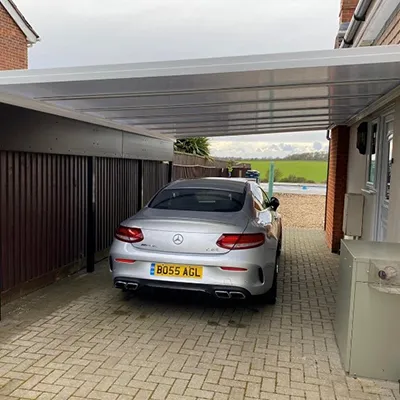A Comprehensive Look at uPVC Windows and Doors: Homeowners’ Preferred Choice
A Comprehensive Look at uPVC Windows and Doors: Homeowners’ Preferred Choice
uPVC (unplasticised polyvinyl chloride) windows and doors have become a staple in modern British homes. Known for their durability, energy efficiency, and low maintenance, uPVC products offer a cost-effective solution for homeowners looking to enhance their property’s aesthetic and functional value. Unlike traditional wooden frames, uPVC is resistant to rot, rust, and corrosion, making it an ideal choice for the UK’s variable climate.
In the UK market, the popularity of uPVC windows and doors has surged over the past few decades. This rise can be attributed to their superior insulation properties, which help reduce energy bills and carbon footprints. Additionally, uPVC’s versatility in design allows for a wide range of styles and finishes, catering to diverse architectural preferences and enhancing curb appeal.
We will delve deeper into the benefits of uPVC windows and doors, exploring their impact on energy efficiency, security, and overall home value. We’ll also provide tips on selecting the right uPVC products for your home and maintaining them to ensure longevity. Whether you’re renovating your home or building a new one, this guide will equip you with the knowledge to make informed decisions about uPVC windows and doors.

What is uPVC?
uPVC, or unplasticised polyvinyl chloride, is a type of plastic widely used in the construction industry, particularly for windows and doors. Unlike regular PVC, uPVC does not contain plasticisers, making it more rigid and durable. This material is known for its robustness, resistance to weathering, and low maintenance requirements, making it an ideal choice for various applications in homes and buildings.
Comparison with Other Materials
When compared to traditional materials like wood and aluminium, uPVC stands out for several reasons:
- Wood: While wooden frames offer a classic and natural aesthetic, they require regular maintenance to prevent issues like rot, warping, and insect damage. Wood is also less energy-efficient compared to uPVC, as it can expand and contract with temperature changes, affecting its insulating properties.
- Aluminium: Aluminium frames are known for their strength and slim profiles, allowing for larger glass areas. However, aluminium is a poor insulator and can lead to higher energy costs unless it is thermally broken. Additionally, aluminium frames can be prone to condensation and may require more maintenance to keep them looking their best.
Benefits of uPVC
uPVC windows and doors offer numerous advantages over other materials:
- Durability: uPVC is highly resistant to weathering, corrosion, and fading, ensuring a long lifespan with minimal upkeep. It does not rot, rust, or warp, making it a reliable choice for the UK’s variable climate.
- Energy Efficiency: uPVC provides excellent thermal insulation, helping to keep homes warm in the winter and cool in the summer. This can lead to significant savings on energy bills and a reduced carbon footprint.
- Low Maintenance: Unlike wood, uPVC does not require painting or sealing. A simple wipe-down with soapy water is usually sufficient to keep it looking new.
- Security: uPVC frames are robust and can be fitted with advanced locking mechanisms, enhancing the security of your home.
- Cost-Effective: uPVC is generally more affordable than wood and aluminium, offering a budget-friendly option without compromising on quality or performance.
In summary, uPVC is a versatile and practical material that offers a range of benefits, making it a popular choice among homeowners for modern windows and doors.
Advantages of uPVC Windows and Doors
uPVC windows and doors have gained immense popularity in the UK due to their numerous advantages. Let’s explore these benefits in detail:
Energy Efficiency
One of the standout features of uPVC windows and doors is their exceptional energy efficiency.
- Insulation Properties: uPVC frames are designed to provide excellent thermal insulation. They help to keep the heat inside during the winter and block out the heat during the summer. This is achieved through multi-chambered profiles that trap air and create a barrier against temperature fluctuations.
- Cost Savings on Energy Bills :By improving the insulation of your home, uPVC windows and doors can significantly reduce your reliance on heating and cooling systems. This leads to lower energy consumption and, consequently, reduced energy bills. Over time, the savings on energy costs can offset the initial investment in uPVC products.
Durability and Longevity
uPVC windows and doors are renowned for their durability and long lifespan.
- Resistance to Weather and Corrosion:Unlike wood, which can rot, or aluminium, which can corrode, uPVC is highly resistant to the elements. It does not warp, rust, or fade, even when exposed to harsh weather conditions. This makes uPVC an ideal choice for the UK’s variable climate.
- Low Maintenance Requirements:One of the major advantages of uPVC is its low maintenance. Unlike wooden frames that require regular painting and sealing, uPVC frames only need an occasional wipe-down with soapy water to keep them looking new. This saves homeowners both time and money on upkeep.
Security Features
Security is a top priority for any homeowner, and uPVC windows and doors excel in this area.
- Strength and Robustness: uPVC frames are incredibly strong and durable. They can withstand significant force, making them difficult to break or damage. This inherent strength adds an extra layer of security to your home.
- Advanced Locking Mechanisms: uPVC windows and doors can be fitted with advanced multi-point locking systems, which provide superior protection against intruders. These locks engage at multiple points along the frame, making it much harder for potential burglars to gain entry.
Aesthetic Appeal
Beyond their practical benefits, uPVC windows and doors also offer aesthetic advantages.
- Versatility in Design and Colours: uPVC is available in a wide range of styles, colours, and finishes. Whether you prefer a traditional look or a modern design, there is a uPVC option to suit your taste. This versatility allows homeowners to enhance the visual appeal of their property.
- Enhancing Property Value: Installing high-quality uPVC windows and doors can boost the overall value of your home. Potential buyers are often attracted to properties with energy-efficient, low-maintenance, and secure features. As a result, uPVC installations can make your home more appealing on the market.
uPVC windows and doors offer a comprehensive range of benefits, from energy efficiency and durability to security and aesthetic appeal. These advantages make them a smart investment for any homeowner looking to improve their property’s functionality and value.

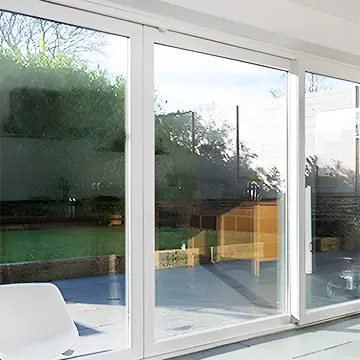
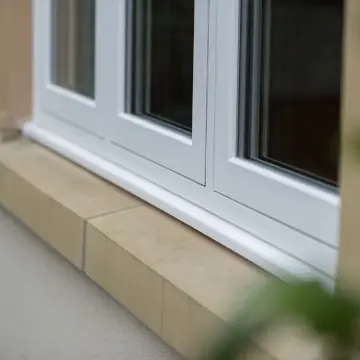
Types of uPVC Windows and Doors
uPVC windows and doors come in a variety of styles, each designed to meet different aesthetic and functional needs. Here’s an overview of the most popular types:
Different Styles of uPVC Windows
- Casement Windows:These are the most common type of uPVC windows. Hinged at the side, they open outwards like a door, providing excellent ventilation and unobstructed views. Casement windows are known for their simplicity and ease of use.
- Sash Windows: Sash windows have a traditional appearance, making them ideal for period properties. They consist of one or more movable panels (sashes) that slide vertically or horizontally. Modern uPVC sash windows combine classic design with the benefits of uPVC, such as energy efficiency and low maintenance.
- Tilt and Turn Windows: These versatile windows can be opened in two ways: tilting inwards from the top for ventilation or swinging inwards from the side for easy cleaning and emergency exits. Tilt and turn windows are popular for their functionality and security features.
- Bay and Bow Windows: Bay and bow windows extend outwards from the main walls of a building, creating additional space and allowing more natural light to enter. Bay windows typically have three panels, while bow windows have four or more. Both styles add a touch of elegance to any home.
Varieties of uPVC Doors
- Front Doors: uPVC front doors are available in a wide range of designs, colours, and finishes. They offer excellent security features, including multi-point locking systems, and are highly durable and weather resistant.
- Patio Doors: uPVC patio doors are perfect for connecting indoor and outdoor spaces. They come in sliding or French door styles, providing easy access to gardens, patios, or balconies. Sliding patio doors are ideal for saving space, while French doors add a touch of sophistication.
- French Doors: uPVC French doors consist of two doors that open outwards or inwards from the centre. They are often used to create a seamless transition between indoor and outdoor living areas. French doors are known for their aesthetic appeal and ability to let in plenty of natural light.
- Bi-Fold Doors: These doors consist of multiple panels that fold back on themselves, creating a wide opening. uPVC bi-fold doors are perfect for creating a large, open-plan living space and are ideal for modern homes.
uPVC windows and doors offer a wide range of styles to suit any home. Whether you prefer the classic look of sash windows or the modern functionality of tilt-and-turn windows, there is a uPVC option to meet your needs. Similarly, uPVC doors come in various designs, from secure front doors to elegant French doors, enhancing both the aesthetic and practical aspects of your home.
Cost Factors for uPVC Windows and Doors
When considering uPVC windows and doors for your home, understanding the cost factors is crucial.
Factors Influencing Cost
Several factors can influence the cost of uPVC windows and doors:
- Size: Larger windows and doors require more material and labour, increasing the overall cost.
- Style: Different styles, such as casement, sash, or tilt and turn, have varying manufacturing complexities and costs.
- Glazing Options: Double or triple glazing improves insulation but also raises the cost due to additional materials and manufacturing processes.
- Customisation and Additional Features: Custom colours, finishes, and additional security features can add to the cost. For example, choosing a woodgrain finish or adding decorative glazing will increase the price.
Cost Comparison with Other Materials
When compared to other materials, uPVC is generally more cost-effective:
- Wood: Wooden windows and doors are typically more expensive due to the cost of the material and the need for regular maintenance. They can cost up to 50% more than uPVC.
- Aluminium: Aluminium frames are also more expensive than uPVC, primarily due to their strength and slim profiles. However, they are less energy-efficient unless thermally broken.
In summary, while uPVC windows and doors offer a budget-friendly option with numerous benefits, the final cost will depend on various factors such as size, style, glazing, and customisation options. Understanding these factors can help you make an informed decision and ensure you get the best value for your investment.
Maintenance Tips for uPVC Windows and Doors
Proper maintenance of uPVC windows and doors ensures they remain in excellent condition and perform optimally for years to come. Here are some essential tips:
Routine Cleaning Practices
Regular cleaning is crucial to keep your uPVC windows and doors looking their best:
- Wipe Down Frames: Use a soft cloth and a mild detergent mixed with warm water to wipe down the frames. Avoid abrasive cleaners or scouring pads, as they can scratch the surface.
- Clean Glass: Use a glass cleaner or a mixture of vinegar and water to clean the glass panes. Wipe with a lint-free cloth for a streak-free finish.
- Lubricate Moving Parts: Apply a light lubricant to hinges, locks, and handles to ensure smooth operation. This helps prevent wear and tear on the moving parts.
Addressing Common Issues
Even with regular maintenance, you may encounter some common issues:
- Handling Minor Repairs: If you notice any minor damage, such as small cracks or chips, use a uPVC repair kit to fix them promptly. This prevents the damage from worsening and maintains the integrity of the frames.
- Adjusting Hinges and Locks: Over time, hinges and locks may become misaligned. Use a screwdriver to make minor adjustments and ensure the windows and doors close properly.
Ensuring Long-Term Performance
To ensure your uPVC windows and doors perform well over the long term:
- Inspect Seals: Regularly check the seals around the frames for any signs of wear or damage. Replace any damaged seals to maintain energy efficiency and prevent drafts.
- Check Drainage Holes: Ensure that the drainage holes at the bottom of the frames are clear of debris. Blocked drainage holes can lead to water accumulation and potential damage.
By following these maintenance tips, you can keep your uPVC windows and doors in top condition, ensuring they continue to provide energy efficiency, security, and aesthetic appeal for many years.
Environmental Impact of uPVC Windows and Doors
uPVC windows and doors are not only practical and durable but also offer several eco-friendly benefits, making them a sustainable choice for homeowners.
Eco-Friendly Aspects of uPVC
- Recyclability: One of the key environmental advantages of uPVC is its recyclability. At the end of their life cycle, uPVC windows and doors can be collected, purified, and reprocessed into new products. This closed-loop recycling process helps reduce landfill waste and conserves natural resources.
- Energy Efficiency Contributions: uPVC windows and doors are highly energy-efficient due to their excellent thermal insulation properties. They help maintain a stable indoor temperature by preventing heat loss in winter and keeping interiors cool in summer. This reduces the need for heating and cooling, leading to lower energy consumption and reduced carbon emissions.
Comparison with Other Materials
When compared to other materials, uPVC has a lower environmental footprint:
- Wood:While wood is a natural and renewable resource, it requires regular maintenance and treatment with chemicals that can be harmful to the environment. Additionally, deforestation for wood production contributes to habitat loss and climate change.
- Aluminium: Aluminium frames are durable and recyclable but have a higher carbon footprint due to the energy-intensive extraction and production processes. Without thermal breaks, aluminium is also less energy-efficient compared to uPVC.
uPVC windows and doors offer significant environmental benefits through their recyclability and energy efficiency. They provide a sustainable alternative to traditional materials like wood and aluminium, helping to reduce the overall environmental impact of building and maintaining homes.
Conclusion
In summary, uPVC windows and doors offer a multitude of benefits, making them a popular choice for homeowners in the UK. Their energy efficiency helps reduce heating and cooling costs, while their durability ensures long-lasting performance with minimal maintenance. The security features of uPVC windows and doors provide peace of mind, and their aesthetic versatility enhances the visual appeal and value of any property.
Choosing uPVC windows and doors is a smart investment for anyone looking to improve their home’s functionality and appearance. For those seeking quality and affordability, contact Style Superior Windows & Conservatories. We offer a wide range of uPVC products tailored to meet your needs. With our expertise and commitment to excellence, you can trust us to provide the best solutions for your home.
Glossary of Terms

uPVC (Unplasticised Polyvinyl Chloride)
A type of plastic used extensively in the construction industry for windows and doors. It is rigid, durable, and resistant to weathering, making it an ideal material for various applications.
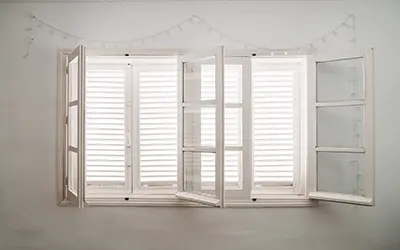
Casement Window
A type of window that is hinged at the side and opens outwards like a door. It is known for its simplicity and ease of use.
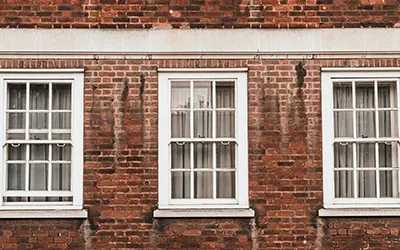
Sash Window
A traditional style of window consisting of one or more movable panels (sashes) that slide vertically or horizontally. Modern uPVC sash windows combine classic design with energy efficiency and low maintenance.
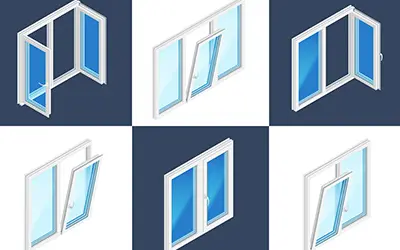
Tilt and Turn Window
A versatile window that can be opened in two ways: tilting inwards from the top for ventilation or swinging inwards from the side for easy cleaning and emergency exits.

Bay Window
A window that projects outwards from the main walls of a building, creating additional space and allowing more natural light to enter. Typically consists of three panels.

Patio Door
A door that connects indoor and outdoor spaces, available in sliding or French door styles. Ideal for providing easy access to gardens, patios, or balconies.
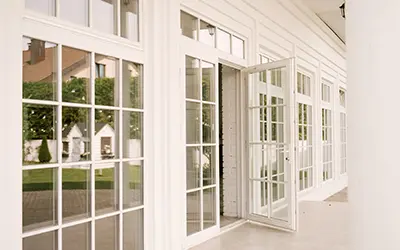
French Door
A pair of doors that open outwards or inwards from the centre, often used to create a seamless transition between indoor and outdoor living areas. Known for their aesthetic appeal and ability to let in natural light.

Bi-Fold Door
A door consisting of multiple panels that fold back on themselves, creating a wide opening. Perfect for creating a large, open-plan living space.

Recyclability
The ability of a material to be collected, purified, and reprocessed into new products. uPVC is recyclable, contributing to its eco-friendly benefits.



